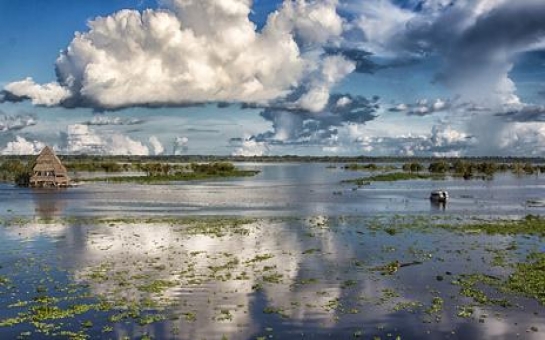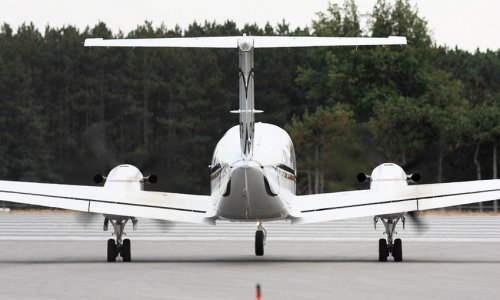The houses hover some 3m above the ground. They are not unusual: almost everything in the Mamirauá reserve is on stilts, even the chicken coop. It has to be. Although much of Brazil is currently suffering one of the worst droughts in decades, this part of the Amazon is almost completely flooded for the six-month wet season. By April, the end of the rainy season, the river rises up to 10m high and overflows its banks. As a result, all living things in the forest, including locals, must adopt an amphibious lifestyle. Even the jaguars have learned to adapt by living in tree branches when the floods arrive.Only 1,000 tourists per year are allowed to visit Mamirauá, which, at 57,000sqkm, is the largest wildlife reserve in the country. Created in 1984 to save the once-endangered uakari monkey, the reserve is the most carefully managed and protected part of the Amazon – and is also home to what many consider Brazil’s most successful sustainable tourist resort, the Uakari Floating Lodge. “If [the reserve] had not been created,” guide Francisco Nogeuira said, “the rivers and lakes would be empty of fish, and who knows how many trees would remain today?”Just 30 years ago, Nogeuira told me, those living in the larger towns of Tefe, located some 60km south, and Manaus, 600km east, would travel to Mamirauá to make a profit from fishing and logging. But that option disappeared, at least technically, when the area became a reserve.The pirarucu, one of the largest freshwater fish in the world at up to 4m long, is one of the Mamirauá’s main success stories. (In fact, the fish is the main logo for the reserve). Twenty years ago, the species was almost extinct. But after pirarucu fishing was prohibited in most of the reserve’s lakes and an annual quota negotiated, numbers replenished and are now at their pre-1990 levels. Today, only locals who depend on the pirarucu for their livelihood are allowed to fish it. Logging was also made illegal – except to the few locals who need wood for heating and building. With less competition from big-city businessmen and multinational corporations, and with their resources protected in the long term, Mamirauá’s 10,000 riverside residents can once again live sustainably.Today the rainforest appears limitless, with trees continuing for miles. Almost as expansive as the forest itself is its wildlife: more than 350 types of birds alone, including the prehistoric-looking hoazin and the yellow-rumped cacique, which mimics other wildlife with its call. The limit on tourist numbers means that the impact to the surrounding wildlife and fauna is minimised; even the guided tours of the area include a maximum of 10 people.The Mamirauá Institute for Sustainable Development, which runs the reserve and the lodge, also steers clear of the Disneyfied aspects of other Amazon tours: there are no dancing tribesmen or performing monkeys. Instead, residents share their knowledge with visitors and are paid for it, from how they cook manioc (a staple root vegetable) to where they catch their fish for dinner. They are employed at Uakari Lodge as cooks or fishing and hiking guides; the institute’s stated goal is that eventually the lodge will be managed purely by the locals. Others aid researchers to track dolphins and jaguars – rather than hunting them. In 2011, tourism activities overall generated an average of R$1,800,000 for each family in the reserve.(BBC)Bakudaily.az
Sleeping on stilts in the Amazon - PHOTO
World
22:30 | 03.07.2014

Sleeping on stilts in the Amazon - PHOTO
As 75-year-old villager Antônio Gomes told us stories of growing up in Boca do Mamirauá, a tiny settlement in the northern Amazon rainforest, I tried to ignore the tiny blue flies biting through my trousers. Despite my interest in hearing how locals survive in this remote part of the Brazilian rainforest, now a part of the Mamirauá Sustainable Development Reserve, I was grateful to escape when he finished, finding refuge in one of the tall wooden houses.
Follow us !










